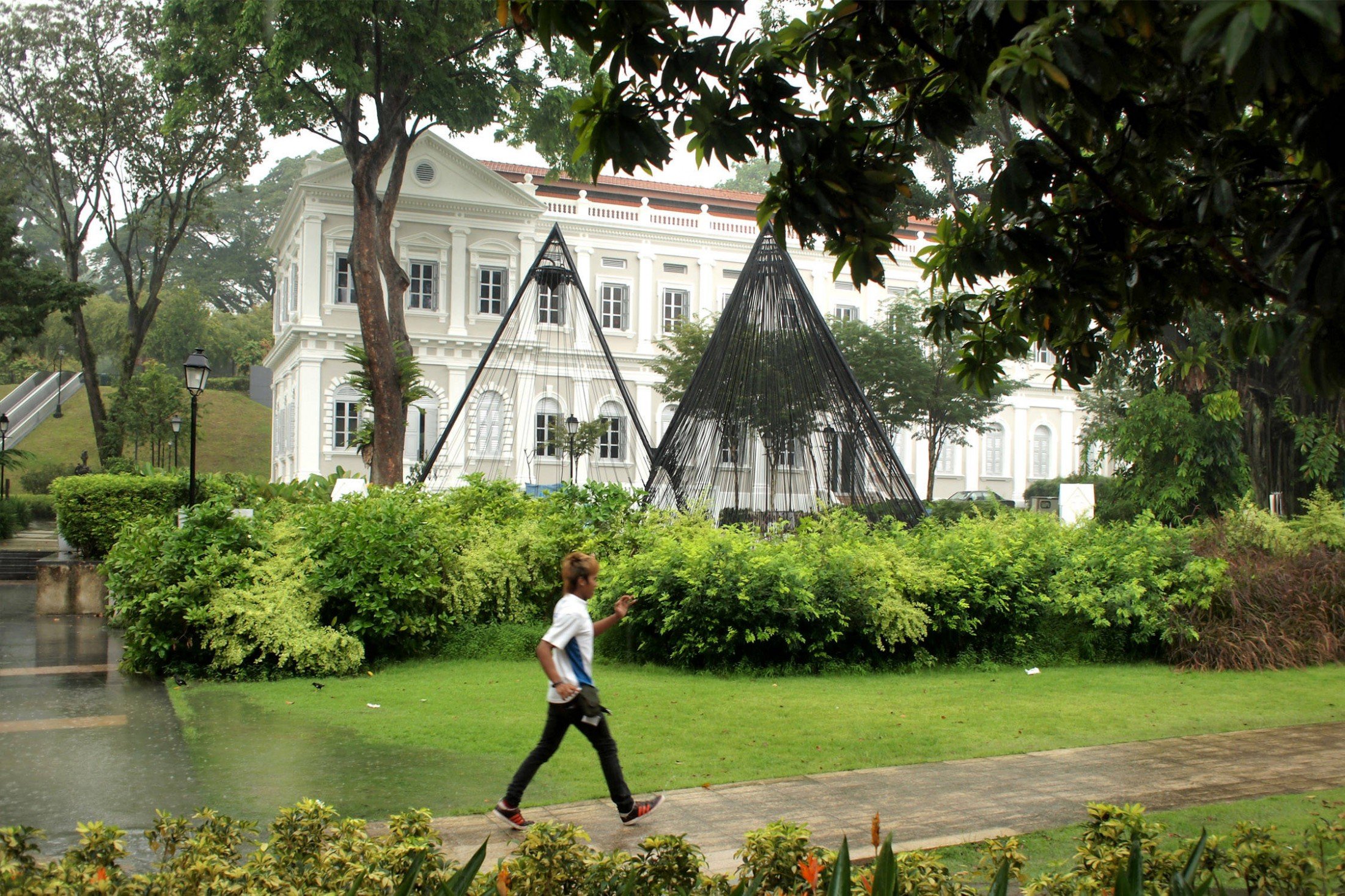
Installation co-commissioner and curator
The Future Memory Pavilion, designed by Pernilla Ohrstedt and Asif Khan, was commissioned by the Royal Academy of Arts and the British Council for the Singapore Archifest in 2011, with the support of The Preservation of Monuments Board. Two cones stretching to eight meters high and 20 meters in diameter are made of a minimal structure, 3.5 km of black marine rope and a slender steel frame, was erected on the lawn in front of Singapore’s National Museum.
The permeable pavilion framed a month-long performance. Falling construction sand slowly built up a 3-metre tall dune next to a towering ice stack that melted away. An ephemeral monument to the two materials that have been integral to the city’s relentless urbanisation. The conical forms emulate the hills of Singapore, which were methodically destroyed, as the soil was needed for the expansion of island’s grounds. Chinese merchants were importing ice from New England as far back as 1854. It was considered a luxury in the tropical climate and available only to the wealthiest Singaporeans.
The idea of a ‘future memory’ in architecture was debated in a forum and workshops that explored the relationship between past, present and future, addressing a perceived contradiction between forward-looking design and that which retains memories of the past. It was accompanied by a booklet with essays and exercises for school children.
Future Memory Pavilion
National Museum of Singapore
October – November 2011




